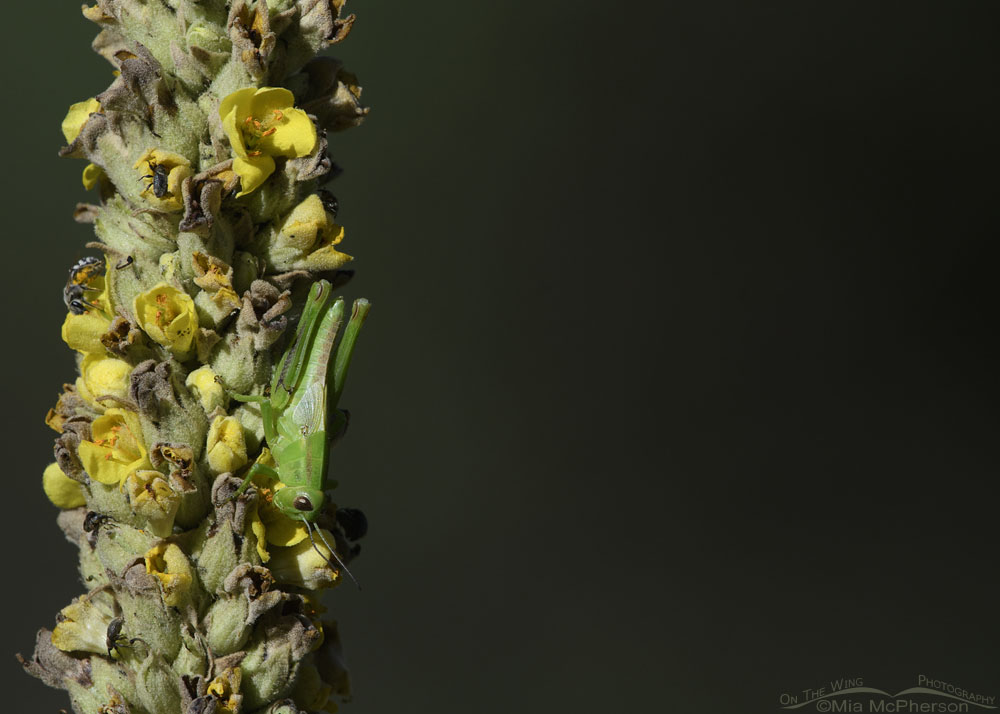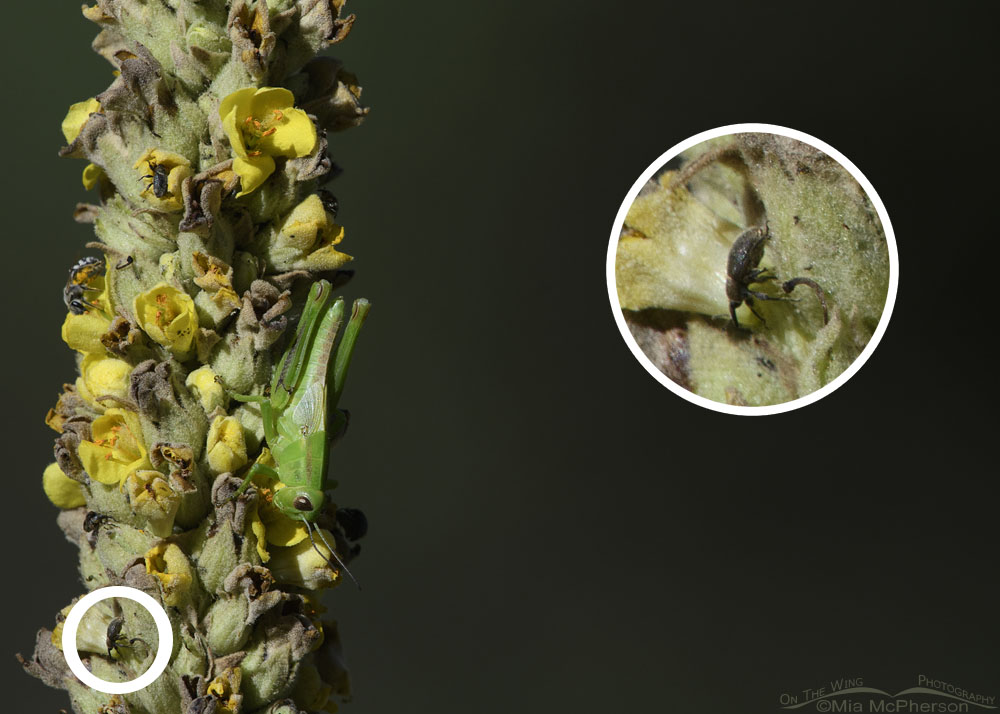 Bright green grasshopper nymph on Common Mullein – Nikon D500, f10, 1/1250, ISO 500, -1.0 EV, Nikkor 500mm VR with 1.4x TC, natural light
Bright green grasshopper nymph on Common Mullein – Nikon D500, f10, 1/1250, ISO 500, -1.0 EV, Nikkor 500mm VR with 1.4x TC, natural light
I have struggled for the past four days trying to identify a bright green grasshopper nymph that I found on a Common Mullein up in the Wasatch Mountains. When I showed a photo of the grasshopper to a dear friend he suggested asking the readers of my blog for assistance.
I shared a photo of the grasshopper on iNaturalist and the suggestion was that this is a North American Spur-throated Grasshopper of the Genus Melanoplus. Because this grasshopper does not have fully formed wings I believe that it is in an instar stage. Grasshoppers typically have 5 instar stages.
Location Information:
- Found at +/- 6,200 ft elevation in the Wasatch Mountains in Summit County, Utah.
- The Common Mullein is about 15 feet from a dirt road. The road is about 40 feet from an alpine creek.
- Nearby vegetation included grasses, mulleins, thistles and willows.
The almost neon green color of the grasshopper was what caught my attention when compared to the duller, lighter green of the mullein flower stalk.
This grasshopper may only be found in western North America or it may be more widespread. I simply don’t know but I am curious about its identification. If any of you have suggestions for the identification of this grasshopper I would truly appreciate your help.
 Probable European curculionid weevil – Gymnaetron tetrum
Probable European curculionid weevil – Gymnaetron tetrum
While I had the grasshopper and mullein in my viewfinder I could also see a native bee above and to the left of the grasshopper along with several weevils. Because Common Mullein isn’t native to North America I was curious about the identification of the weevils and did some research. The weevils may be European curculionid weevils (Gymnaetron tetrum) which were introduced to North America to help control the spread of the introduced mullein.
I’m not certain about the ID of the bee either because there are many native bees in Utah plus I put more effort into the identification of the larger grasshopper than I did the bee.
Life is good and each day in the field presents a mystery to solve if I look close enough.
Mia
Click here to see more of my insect and spider images.


This academic: https://en.wikipedia.org/wiki/Jeffrey_A._Lockwood
could do it, so perhaps you could reach him at the University of Wyoming?
Jeffrey A Lockwood
Professor
Philosophy & Religious Studies
Ross Hall 129
Campus
(307) 766-4260 | lockwood@uwyo.edu
I hope that someone much more knowledgeable than me can assist.